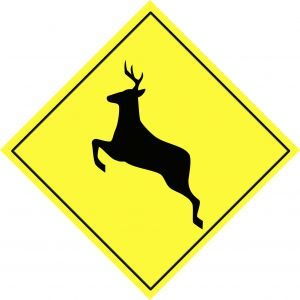
After learning that a UNL vehicle has already collided with a deer this season, Transportation Services is offering tips on how to decrease the risks associated with deer collisions. Some of these tips include watching for road signs and avoiding the urge to swerve.
During the fall and early winter, deer are most active. As deer hunting season approaches, hunters cause deer to move more than usual. The result of this increased movement is more deer on roadways, which can mean more collisions.
The department of roads places deer crossing signs in areas where there are high frequencies of deer collisions. When traveling through an area where these signs are posted, slow down, increase side-to-side scanning and be prepared for a possible deer to come onto the roadway.
The initial reaction of many drivers when an animal is on the road is to swerve to steer around it. Consequently, many of these drivers run off the road or strike trees, poles, guardrails and even other vehicles. The collisions that occur from swerving are typically far worse than striking the animals. Motorists should avoid the urge to swerve.
Another common reaction to a deer on the roadway is to hit the brakes. While hitting the brakes will slow down the vehicle and lessen the severity of the impact, it is important to release the brakes just before striking the deer. The front-end of the vehicle will be lifted higher, pushing the deer ahead. If braking at the time of the collision, the front of the vehicle will be pushing downward and this will increase the risk of the deer riding over the hood and back into the windshield, which could lead to the deer crashing through the windshield and into the passenger area. To avoid this, let off the brake prior to impact.
At night, use high-beam headlights as much as legally possible and look for those reflective eyes. If one deer is in sight, expect more. Deer are herd animals. If a deer is hit, hold the wheel steady, slow down safely, pull off to the side of the road and turn on hazard flashers. Do not approach an injured deer. An injured animal is unpredictable and can cause injury.